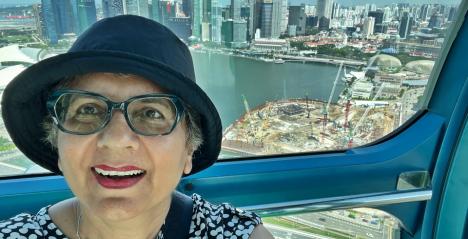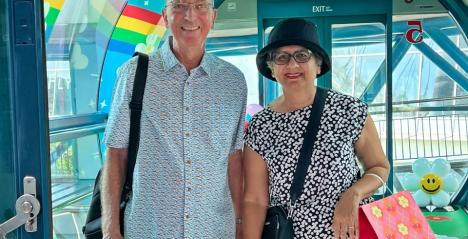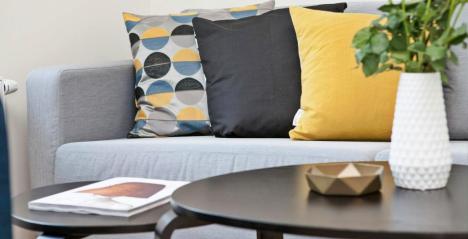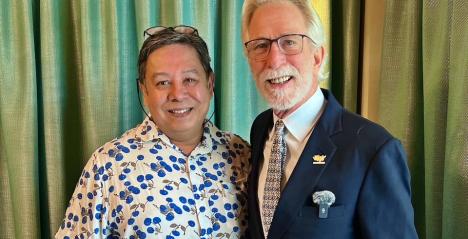The Chinese artist Jiang Tie Feng is just one of a generation of influential painters from his country to have grown up creatively under the shadow of the Cultural Revolution before exerting a considerable influence on Western art scenes.
In 1982 a National Geographic reporter writing an article on life in China saw Jiang's paintings. A selection was smuggled out of China, folded up in a National Geographic magazine, and brought back to the U.S. where they received high praise.

Welcome to our artist spotlight Expat Choicers! If Chinese contemporary art intrigues you, read on. Jiang Tie Feng has described his paintings as "not only pictures", but "also music and poetry that is bewitching, sweet dreams that are being dreamed."
One would be hard-pushed to disagree with him, for his visual style is instantly recognisable by its combination of vibrant colours, abstract elements and patterns, and more figurative motifs, including animals and the female nude.
Swans, bulls, roosters, owls and cranes have all surfaced in his pieces that retain a certain calligraphic quality through their distinctive use of brightly coloured ink. This is to say nothing of the clear influence of Chinese Buddhist Grotto paintings and - crucially - the rich cultural heritage and many ethnic minority groups of the Yunnan region in which he long-lived.

How and where did it all begin?
Jiang Tie Feng was born in Ningbo in China's Zhejiang Province in 1938 and showed a strong love and talent for painting and drawing from an early age. By the time he was 20, he had left home to pursue an artistic career, gaining admission alongside just 59 other aspiring artists to the prestigious Central Academy of Fine Arts in Beijing as part of an annual nationwide admissions programme.
Studying alongside a fellow citizen who would gain similar artistic renown - Huang Yong-Yu - Jiang was one of the last students of the school to be taught the traditional Chinese art disciplines before the drastic changes wrought by Mao's Cultural Revolution.
Graduating with honours from the Academy in 1963, Jiang relocated to Yunnan Province. Faced with the same government repression as his compatriots, he found himself with little choice but to create official propaganda posters and sculptures, including the iconic red-faced poster of Mao, in the Red Guards' approved Social Realist style.
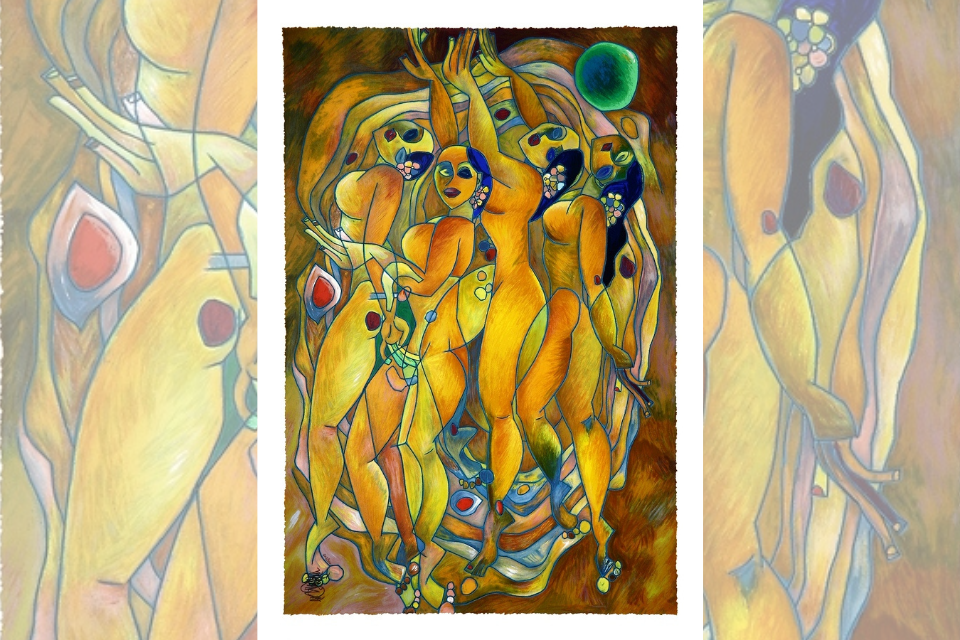
The emergence of the Yunnan School...
Nonetheless, the harsh restrictions placed upon Jiang by the authorities did not prevent him from making a significant impact in the underground art world of Communist China - or at least, as significant an impact as could have been achieved in the circumstances.
Inspired by the natural beauty of Yunnan, he and fellow artists He Neng and Liu Shaohui secretly founded what became known as the Yunnan School. The school became known for a style distinguished by bold colour and imagery that he had developed in his spare time, away from the government's prying eyes.
Jiang continued to produce work for the powers-that-be until 1973, with Mao's death in 1976 helping to improve the dire circumstances of many Chinese artists. This was the year in which Jiang was appointed to the board of directors for the Yunnan branch of the Chinese National Art Foundation. In 1979, he was even commissioned by the new government to paint a mural representing Yunnan Province for installation in Beijing's Great Hall of the People.
Sustained and ever-growing success...
The 1980s saw an acceleration in the career fortunes of the now 40-something-year old Jiang, as he and his family moved into bigger and "more civilised" quarters, and he took on the role of Art Instructor at the Yunnan Art Institute.
Then, in 1982, Jiang finally began to gain prominence outside his home country, when a reporter from National Geographic, writing a story on Chinese life, decided to bring several of the artist's pieces back to the United States, where they were gratefully received. Sensing an opportunity, the following year, the artist took advantage of a University of Southern California (USC) cultural exchange programme to come to the United States, moving to the country permanently in 1984.
The Yunnan School had only been exhibited outside Communist China for the first time as recently as 1982, and even then, only at the Institute of Art and Design in Hong Kong. However, the switch to America started to bring Jiang much-deserved wider recognition and success, as his work began to be exhibited at venues such as the Portland Museum in Virginia and the New England Centre of Contemporary Art.
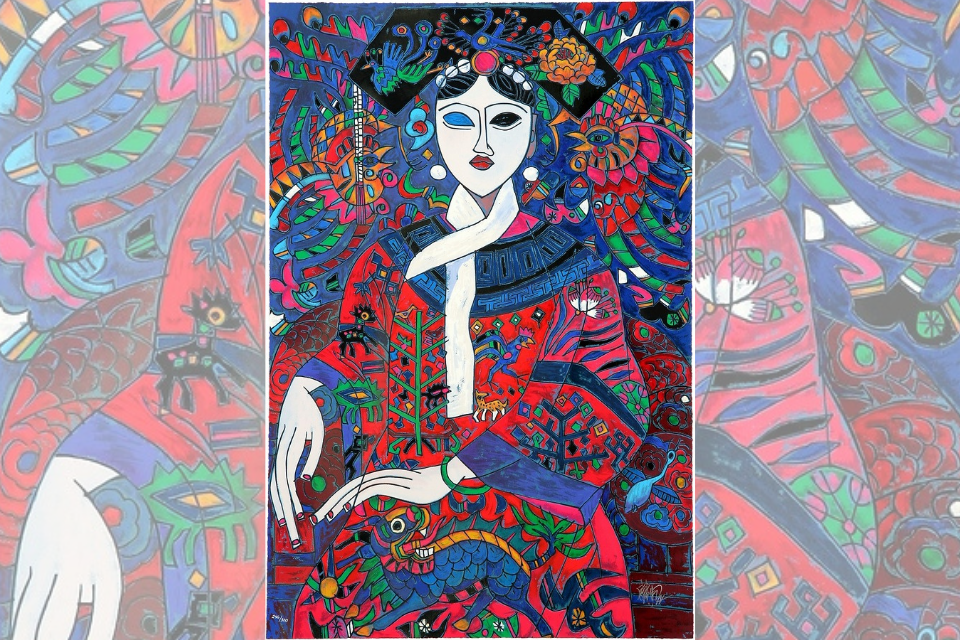
Continued recognition - and a justified 'Artist Spotlight'...
Jiang Tie Feng's newfound career success continued into the 1990s and 2000s, with appearances of his work at the likes of the Springfield Art Museum, California Institute of Fine Arts and even the Ningbo Art Gallery in the town of his birth.
Although Jiang may now be compromised in his productivity by his failing eyesight, his legacy as an artist has already been cemented, by not only the presence of his works in a host of prestigious galleries and museums, but also collectors and admirers in China and around the globe.
It all means that if you desire extremely compelling and exotic artwork - bound together by such powerful themes as motherly love, fertility and strength - you really couldn't choose many finer artists to collect than this incredible figure of the contemporary Western and Chinese art world.
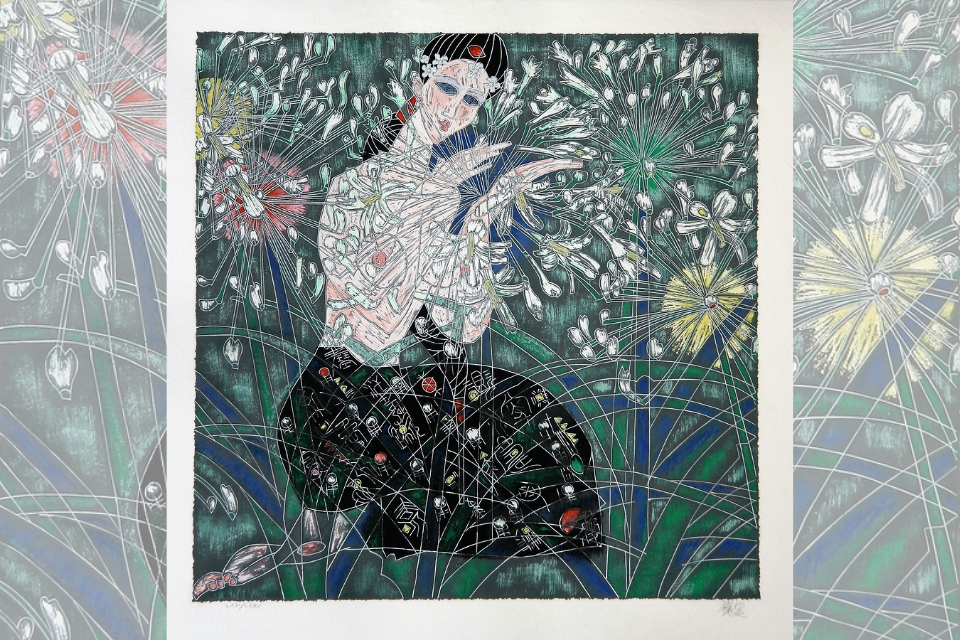
About Addicted…
Our aim at Addicted Art Gallery is to connect you to art in a friendly, posh-less, non-highbrow way.
Over the years we have developed a love for all different types of art and that is what we want Addicted Art Gallery to reflect. As a result, we have divided our art into three broad categories.
Our diverse portfolio includes; Contemporary Art, with a predominantly South East Asian focus; Urban and Pop Art, featuring well known and highly respected artists whose works will make you think, laugh and question; and lastly, there are our beautiful Vintage Posters and Art Deco inspired works which will transport you to a different time.
We hope you enjoy what our Gallery has to offer and encourage everyone to get Addicted too.
If you’d like further information about Jiang Tie Feng or Addicted, drop us a line at Blair@addictedgallery.com or Elena@addictedgallery.com or go to www.addictedgallery.com


